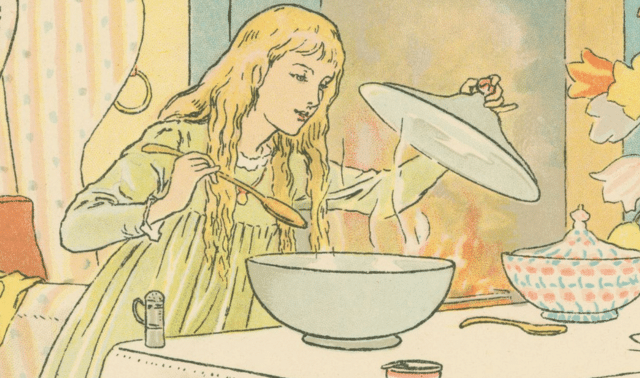
Because of COVID-19, we’re taking stock of our lives in ways we haven’t before. We’re thinking about what really matters. And important things we once put off—like sharing and saving our family stories—have now become a priority. But, also because of COVID-19, we’re not able to tell these stories in person.
Fortunately, in the 100 years since the last major epidemic, we’ve developed many ways of keeping in contact with each other. Interviewing family members from a distance using these resources can bring about its own challenges, but those difficulties pale in comparison to losing the stories that connect us to our past.
“Time is of the essence to talk to your older loved ones, to make sure they don’t feel too isolated, and to try to capture their stories,” says Tiffany Woolf, creator and executive producer of Silver Screen Studios, an intergenerational history project shares stories and advice from Jewish community elders to young people. “Their stories may help others who’ve never been through challenging times like this.”
Let’s learn how to interview your relatives from a distance, plus the best tools and techniques for conducting and recording family history interviews.
Tools for Hosting Long-Distance Interviews

Videochatting
Videoconferencing platforms are the first tools that spring to mind, allowing you to be more personable as you interview your family member. With so many options available, you’ll want to choose a platform that is compatible with your devices and comfortable for you and your relative:
- Zoom
- Skype
- Google Hangouts
- GoToMeeting
- FaceTime (Apple devices only)
The ubiquitous Zoom has gotten perhaps the most attention during the COVID-19 epidemic, and doesn’t require you to have an account to participate in. However, in early 2020 the platform was targeted by “Zoombombing” hackers, who infiltrate sessions with hate speech or pornography. Zoom has since released a guide on how to protect meetings and recommends downloading updated versions of the software.
The others listed above are also good alternatives and have similar capabilities, including video recording. You can find free YouTube tutorials for all of them.
Keep in mind that a lot of people are using these platforms at the same time, so they may sometimes be slow or glitchy. (You might, for example, accidentally turn yourself into a potato!). Familiarize yourself with the platform ahead of time, especially if you’re the one who will be troubleshooting any potential technical difficulties.
Personal historian Jennifer Campbell of Heritage Memoirs has mainly switched to interviewing clients via Zoom and Skype since the quarantine. She notices some common potential problems. “Sometimes [interviewees] press buttons they’re not supposed to, and cut off the call completely. They may also have hearing problems that impede communication,” says Campbell.
Certain social cues present during in-person interactions may also be lost in videoconferencing. “When you’re sitting in the living room together, they excuse themselves to use the bathroom or get a glass of water. But they may not want to disrupt a video call to do that,” Campbell says. You can’t troubleshoot everything ahead of time, so be flexible and patient with yourself and your relative.
Campbell also notes that the basic best practices for interviews—listening deeply, asking appropriate follow-up questions, allowing time to pause and think before answering, etc.—are the same, whether you’re in person or long distance.
Perhaps your interviewee doesn’t want to have an interview in real time, or you two can’t work out a time to sit down and be together in a virtual meeting. Instead, your interviewee could record stories on a smartphone or digital video camera, then send them to you. Or you could send short video messages back and forth through the video-messaging app MarcoPolo.
Phone calls
However, videoconferencing may not always be the best option. Woolf recommends using whatever is easiest for your loved ones to learn and navigate. That’s what she’s been doing when speaking with people for Dispatches from Quarantine and Coming of Age, two series about seniors’ lives that she’s making in partnership with the Jewish arts and culture nonprofit Reboot.
“We are doing everything from asking questions and having them videotape themselves with their iPhone to [recording] calls via Skype and Zoom,” says Woolf. “You have to do your homework first and troubleshoot. I interviewed my mother-in-law via FaceTime and then there was no audio. I had to go back through QuickTime to grab the audio.”
Filmmaker and actress Jessie Kahnweiler went even simpler for “Closening,” a Reboot podcast featuring quarantine conversations with her 99-year-old grandmother and other people’s grandparents. She uses the phone.
“I wanted to make it as technically easy as possible. I wanted people to just pick up a phone and feel like they were having a conversation with one of their friends,” says Kahnweiler. “On my end, I record. I have a great little plugin and a USB microphone.”
Phone-recording apps like Cube Call Recorder (Android), TapeACall (iPhone) and Rev Call Recorder (iPhone) work well. Or you can put your conversation on speaker phone, then record the conversation with a cassette or digital recorder. (Expect to hear some background noise.)
Written communication
Of course, you could also interview your subject via email, or exchange written letters. The technology in either case is much simpler, though you won’t have the benefit of hearing your relative tell stories in their own voice.
What to Ask

Don’t ignore the elephant in the room: We’re all thinking about and have been affected by COVID-19, so it’s a good place to start. In fact, it provides a nice segue to talking about family resilience—stories that remind us our ancestors have been through hardships and persevered. And that tell us we can, too.
Woolf has been starting her recent interviews by asking people how they’re doing under quarantine: How is this new normal working out for you? What are some times in your life that this might remind you of? How did going through that experience help you manage this time in your life?
Kahnweiler said that across the board, most people have said this is a once-in-a-lifetime event, with the closest comparisons being wars and personal tragedies. They’ve also been talking about what they’re doing now to deal with their current circumstances.
“That’s been the most inspiring to me. It’s not what people have done in the past to be resilient, but what people are doing today,” says Kahnweiler. “We don’t know if we’re going to make it, but we’re going to fight for happiness today.” From there, she said, the conversation takes on a life of its own, and interviewees usually want to talk about their lives.
While talking about your relative’s life, you might want to add in your own perspective and stories as well, so you both have an opportunity to garner wisdom from each other. Sharing stories from both your lives also gives you the opportunity to bond over your similarities, making your experience even more meaningful.
Just make sure you don’t talk over or interrupt your relative’s story. Make sure they’ve finished before diving into your own history. Give them the space to pause and reflect, then add in a few beats to make sure they really are done talking.
Ahead of time, create a list of questions that you’d like to ask. Family Tree Magazine has a list of life story questions that will help guide you, as does StoryCorps. Start with questions you’ve always wanted the answers to. A thorough list will include questions about childhood, parents, early friends, school, career, relationships, favorite things and values.
If you can’t think of any, think about what you wish you knew about the loved ones who’ve already passed away. Ask your living relatives about those things.
However, don’t feel limited to just discussing serious family matters. Add silly, introspective and philosophical questions that will make the conversation even more interesting. You might also consider bringing photos and heirlooms to spark their memory—and ask them to bring some as well, then describe them to you.
How to Ask About Difficult Topics
Woolf says to ask the harder questions, too. For example, she often asks subjects if there is anything in their life they regret or people they’d like to forgive. She’s been known to inquire about their thoughts on death as well.
“This is a really special time. Authenticity rules right now,” says Woolf. “It’s a good time to be asking the hard questions because this may be the last time you are able to ask them.”
Before you begin asking these hard questions, remember to keep your expectations in check and be empathetic and understanding. Just because you want to know more about difficult chapters from their life doesn’t mean they’ll want to tell you. Be prepared not to find out anything, and don’t take a reluctance to answer personally. There are many reasons someone may not want to discuss subjects like this, including having to deal with the shame, trauma or guilt it may dredge up.
Cheri Daniels, MSLS, of Genealogy Literacy spoke at RootsTech 2020 on “Tackling Difficult Chapters of our Family History.” She says to take into consideration the perspectives and biases of the interviewer and the interviewee. You and your relative may be divided by life experiences that are decades apart, which naturally impacts how they share the information, and how we receive the new information.
“My best advice is to treat the person and this special moment with respect,” says Daniels. “Be encouraging and supportive in your reactions and body language when they share their story with you. This creates a safe space that removes judgement, and brings you closer together…Let them guide the conversation.” Don’t push the issue if your subject doesn’t want to talk about it. Let them know you’ll be there if/when they are ready.
Libby Copeland wrote The Lost Family: How DNA is Upending Who We Are, a book about the family you do and don’t find with DNA testing. She recommends letting the person know what you want to know. The situation can be less overwhelming for them that way.
“On the one hand, you want to know something that could impact your own identity. But on the other hand, embedded in that answer is something that could be incredibly private about that person,” says Copeland. “Let the person tell you as much or as little as they’re comfortable with, but also explain what it is that you do want to know. You may want to say, ‘I understand that this may be delicate, and maybe you don’t want to talk about that. I’m looking for this information.’”
If they’re not open to talking about it now, Copeland suggests asking if they’d be willing to write about it and not let anyone see it until they’re ready.
Don Perry, CEO of digital media venture Digital Diaspora Family Reunion LLC (which is creating the TV series Family Pictures USA) says that it occasionally takes time.
“You keep going, you keep talking. Maybe you change the subject and put it aside, and you circle back to it at another time,” says Perry. “When you come up against something and there seems to be real resistance, you don’t have to keep going straight ahead. Just continue to be respectful and sensitive to it.”
Interviewing Other Family Members
In addition, involve as many generations as possible in the process. Have the oldest generation go first, but encourage everyone to share their stories. We all have something to learn from each other’s experiences, especially the ones highlighting our resilience.
In particular, grandkids and grandparents get a lot out of family storytelling. Besides helping build close relationships, studies show that kids who know their family stories have higher self-esteem and are more resilient, while grandparents have shown improved cognitive function and more enthusiasm for personal growth and self-discovery. And all generations gain a greater sense of identity and get to see firsthand the importance of saving and sharing their stories.
“It’s important for people to share their stories. It doesn’t have to just be old stories and old pictures—it could be just as recent as yesterday,” says Perry. “If we think of ourselves as authors of history, we really should be actively, purposely, documenting our lives, with the idea that this will be important to someone at some point in the future.
“I think that by instilling in folks the sense that they are making history—that they’re living history—then every single moment is a chance to shape that history,” he says.
A version of this article appeared in the November/December 2020 issue of Family Tree Magazine.
FamilyTreeMagazine.com is a participant in the Amazon Services LLC Associates Program, an affiliate advertising program designed to provide a means for site to earn advertising fees by advertising and linking to affiliated websites.




